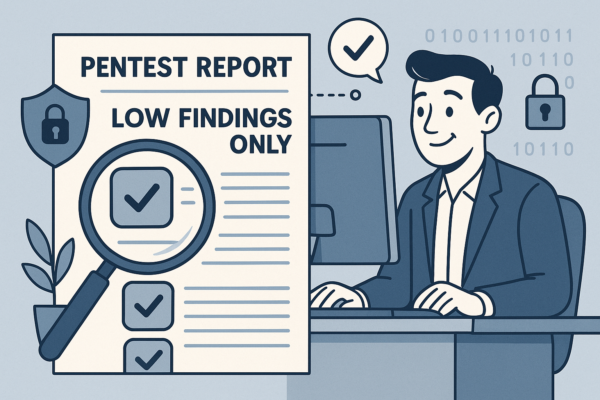“Low Findings Only” in Your Pentest Report — Should You Be Happy?
Imagine you just received your penetration test report. You scroll down and see only a couple of low-severity issues — maybe a clickjacking vulnerability or a misconfigured HTTP header. No critical bugs. No SQL injection. No exposed admin portals. Should you be relieved? Happy? Or maybe… a little concerned? ⸻ What Low or No Findings…











